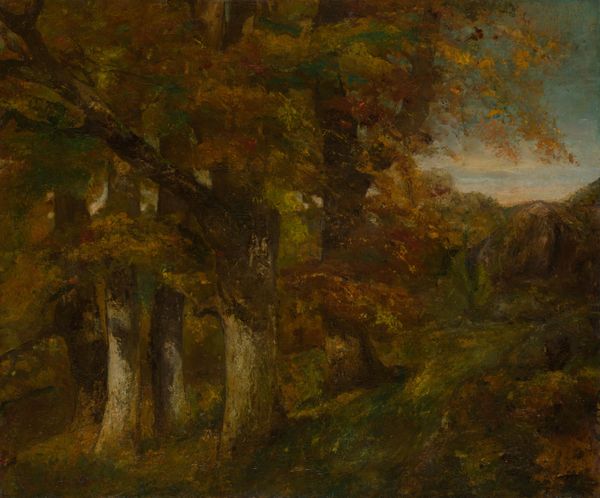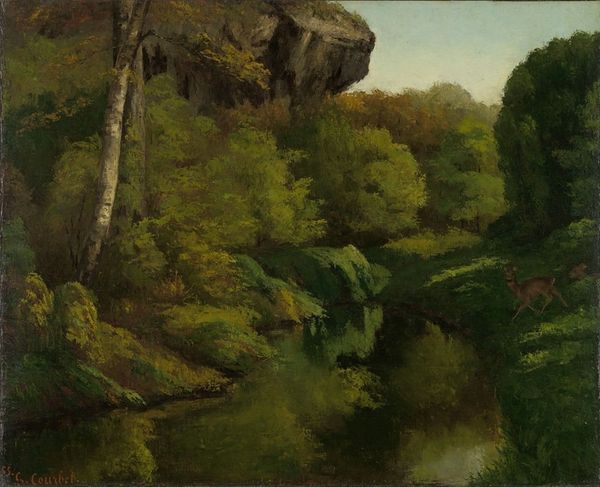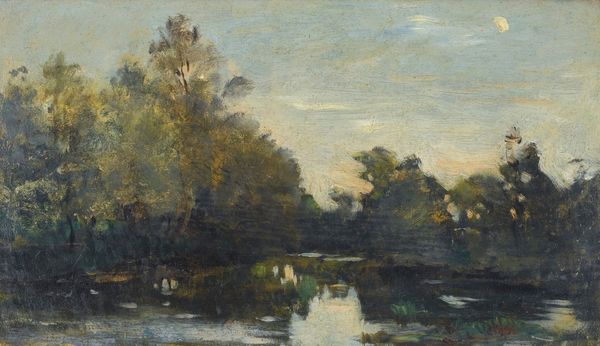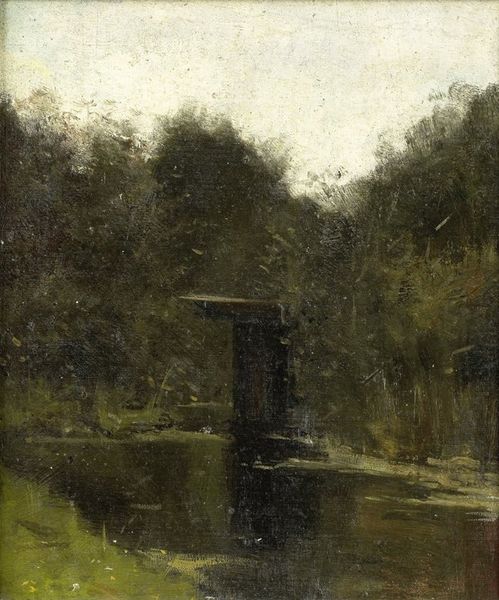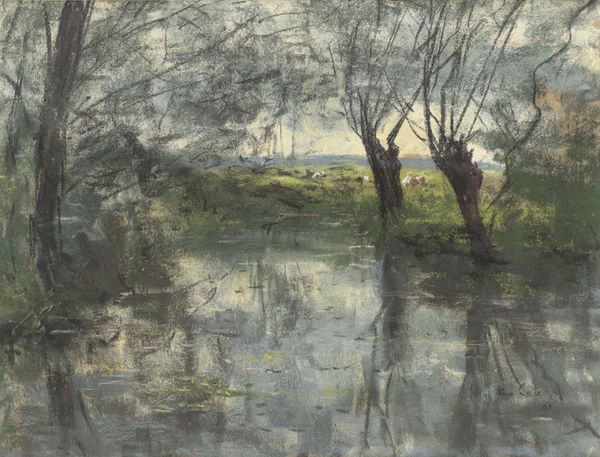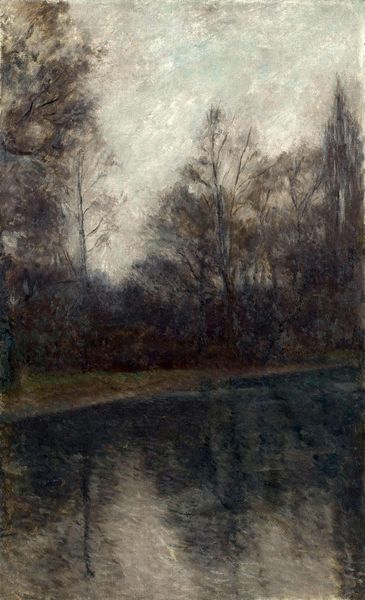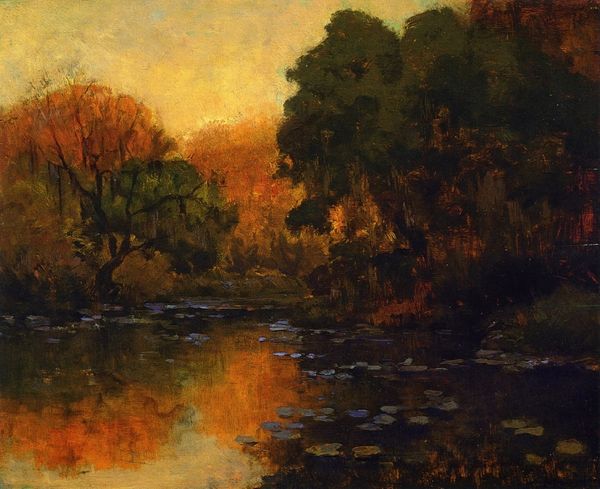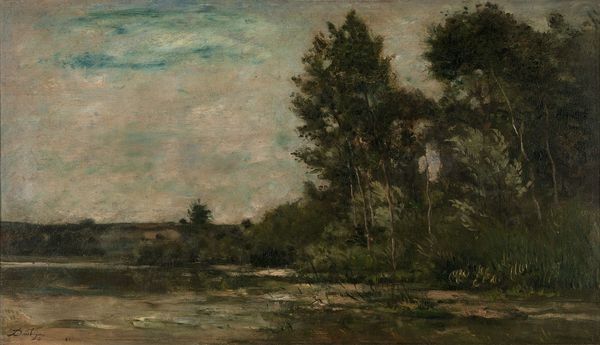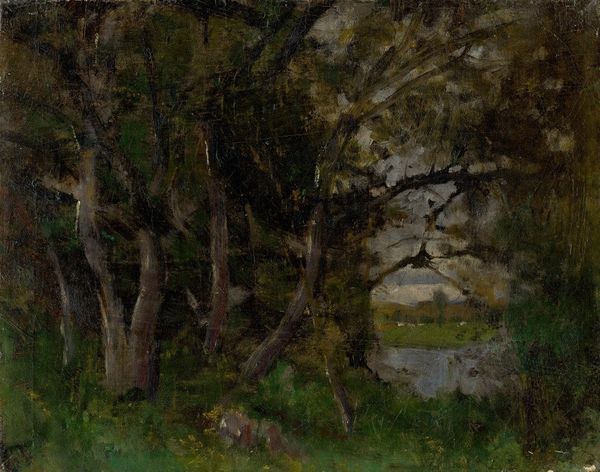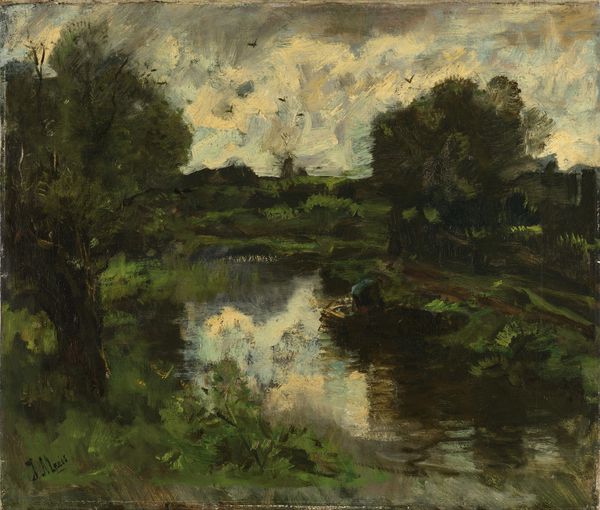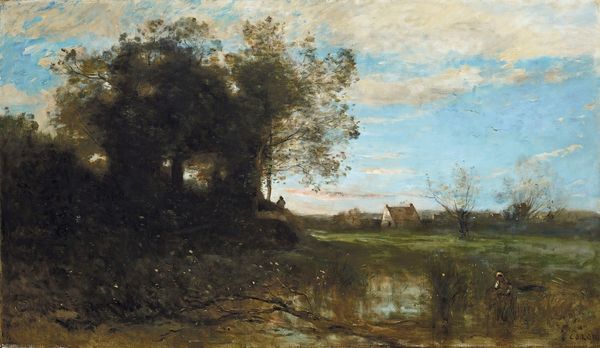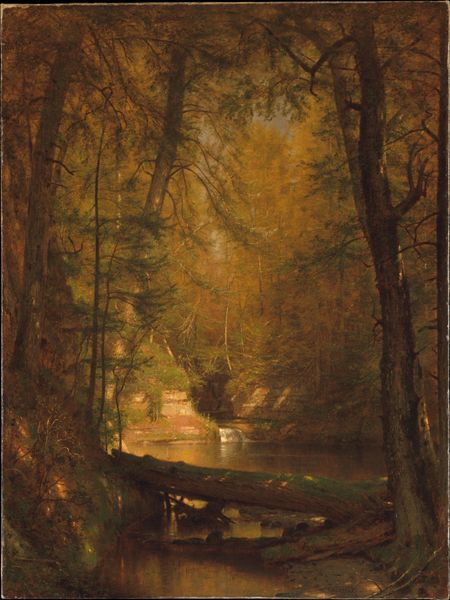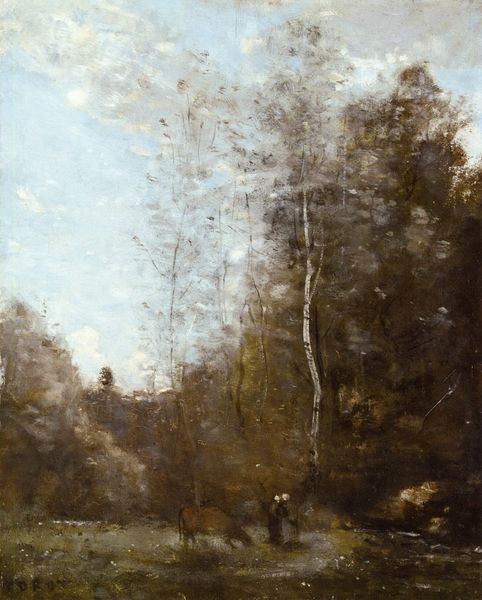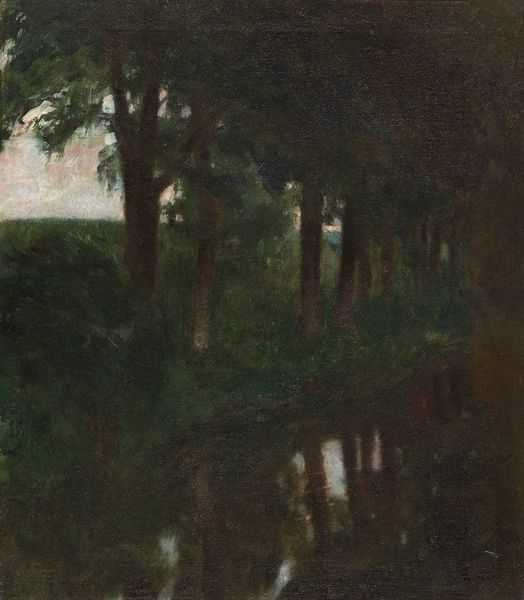
Copyright: Public Domain: Artvee
Gustave Courbet made "Le Lavoir" with oil on canvas. Courbet was a master of Realism in France, a movement that challenged the academic conventions of the art world and its institutions. Realism sought to depict the everyday world, and his focus on the common rural subject in this painting reflects this focus. "Le Lavoir," meaning "the washhouse," portrays a communal space for cleaning clothes, a place of labor often associated with women. By painting this scene, Courbet elevates the ordinary, showing that beauty and significance exist outside the realm of historical or mythological painting. He rejects the conservative standards of the French Academy. In doing so, Courbet implicitly critiques the social structures of his time. He reminds us of the importance of labor and the dignity of everyday life. Art historians use archival material, exhibition histories, and critical writings to contextualize Courbet's work and uncover the social significance of his subjects. The meaning of art is thus contingent on its social and institutional context.
Comments
No comments
Be the first to comment and join the conversation on the ultimate creative platform.
